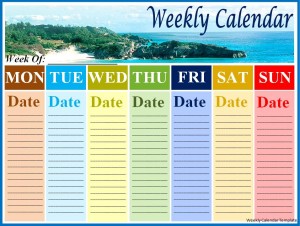by Mayumi-H | Jan 12, 2013 | Fearless, Uncategorized
In the year I’ve had this little blog space, I’ve tried to keep to an update schedule of three times per week: I reserved Mondays for talking about and posting some pages from the Fearless novel, I kept Wednesdays for creative writing prompts (usually 100-Word Challenges for Grown-Ups or Five Sentence Fictions), and on Saturdays, I’ve been posting about my writing process in general. In going over my annual statistics report, though (and looking at the hits and comments I get), I’m wondering if three regular topics is too many.

The (overwhelming?) power of 3
I don’t always have time for them they don’t always interest me. I like giving readers insight into Fearless (which I’ve taken to calling my beautiful mess), but I often use it as an example for my Saturday process posts…and, most readers around here have their own stories they want to tell, so I’m thinking my posting parts of the novel on Mondays is just plain old boring for them. Plus, many of us have made new year resolutions to buckle down with our own writing this year (I know I’ve done), so maybe three times a week is simply too much to take in.
In light of these considerations, I’ve decided to try updates twice a week, instead of three times per week (at least for the next six months). Since my photo/art blog already posts on Mondays, starting this week, Process posts (about writing and the current work in progress/WIP) will occur on Wednesdays, and writing prompt responses/original short fiction posts will occur on Saturdays.

Hopefully, this will help me write better posts, read/comment on more of your posts, and let me concentrate a bit more on my storytelling.
[polldaddy poll=6823403]
What schedule do you keep for your blogging? Do you keep a schedule? How many updates do you consider not enough, too many, or just right?
by Mayumi-H | Dec 29, 2012 | Uncategorized
I’ve kept blogs for a few years, now, but this marks the first year I’ve been with WordPress. I have to say, it’s been the most rewarding blogging experience I’ve had, yet. Not that Blogger didn’t make me feel welcome, but it didn’t exactly allow for the free and lush exchange of ideas that WP has done.
A year into starting this writing blog, I’ve accumulated a bit over 4200 hits, 81 followers, and 886 comments (though about half of those are my replies). There are many professionals who likely say I should thus consider this a failure, because my hits and followers haven’t grown exponentially over the time I’ve been posting. My blog doesn’t do or say or inform about anything unique, aside from it being uniquely my own.
But, it’s been a place where I’ve stretched my writing boundaries with the 100-word and five sentence fiction challenges, and the annual rush of yet another NaNoWriMo. I found a welcoming audience for not just my fan fiction stories, but my original ones, as well. It’s also been the place where I’ve gotten to know so many new, wonderful writer friends for the first time, and gotten to know a few old mates a bit better. And, it’s been the place where I’ve laughed and been driven to deeper thought, where I’ve learned about others and myself equally as much.
So, I think I’ll keep doing this little experiment. I might not be the most popular blog around here, but then, I’ve never been the most popular anywhere. And I might not be the most talented, but I’ve never been ashamed to share a stage with folks of greater talent.
Here’s to another year full of new faces, new places, and new ideas. I hope you’ll join me.
by Mayumi-H | Dec 17, 2012 | Fearless, Process
I’ve seen in circulation a list of character personality traits, that, on one side, lists strengths – what people typically consider “good” traits – and, on the other corresponding side, faults – what people typically consider “bad” traits. The interesting thing is realizing that these traits often represent the same personality quality. For example, “decisive” was on one side, but the characteristics also identified this trait as “single-minded.” “Commanding” was on one side, while “aggressive” was on the other. “Adaptable,” and “fickle.” You get the idea.
Independence is one of those traits we usually consider good in people. But, there are times when independence manifests as stubbornness. The trait itself remains the same; it’s how we deal with that trait that affects events in a story (or in our lives).
We’re all human; we all have strengths and faults. Sometimes, our strengths manifest as faults, and sometimes it’s the other way around.
Writing a bold (headstrong) yet sensitive (flighty) young woman in Fearless has made me realize all too clearly how character traits can be good, bad, and everything in between. This is especially true as she and the people around her have to deal with the conflicts that arise.
He’d thought her pretty from the start, but she was more than that. Vibrant, audacious, exciting, and adventuresome. Girlish and petulant, too, and huffy when she didn’t get her way. But, before her, he’d never thought there could be a woman so sweet and pure and brave as people had only ever been in make-believe stories.
Having the main character make these realizations has been a great joy for me, too. Because, as I look around at the people around me – even the ones I’m with every day – I’ve come to understand a bit better that everyone has multiple sides to them.
What character traits stand out to you, with your characters? Do you consider them strengths or faults?
by Mayumi-H | Sep 29, 2012 | Process
We all go through periods where we don’t want to drag our behinds out of bed to do some work, whether that’s duties around the house, a job at the office, or staring at the glaring computer screen. One way to be certain you stay at your creative best, though, is to make sure you are (wait for it) healthy.
I hate to sound like my grammar school physical education teacher, Miss Sobolowsky, but exercise truly is good for you. (She was the first person to suggest I exercise to reduce the discomfort of menstrual cramps, and darn it if she wasn’t right.) Not only is regular exercise good for your body, but it’s good for your mind, too. And a healthy mind is invaluable to an artist.

(Actually, this is Israeli high jumper Danielle Frenkel, not my grammar school PE teacher.)
Feeling “uninspired?” You may be amazed what wonders a brisk walk or run, a swim, or a sweaty workout will do to get your creativity flowing again. Part of the reason, I’ve found, is because the rush of endorphins brought on by physical exertion opens the blood vessels, which gets your heart pumping faster, sending more blood to your brain. (Nothing like a natural head-rush!)
Depending on your choice of exercise, it also allows you time alone, which you can use to clear your head and maybe consider a new way out of that tricky corner into which you’ve written your characters.
I realize not everyone has time to devote to a regular workout, of course, especially those with hectic household or occupational schedules. But play time with [insert animal or child of choice here] can function as exercise, too. The same can be said for doing the chores (raking leaves, for example, can be a monotonous task…until you put yourself in your character’s shoes, and think about how they’d deal with the job) or running errands. Even a 30-second dance break at your desk can give your body – and your brain – a quick recharge. (Have a rave in your chair. It’s fun!)

In space, no one can hear you exercise. So why not grunt as hard as you can?
So, the next time you’re feeling like the world – either the one you’ve created or the one outside your window – is getting you down, jump up and get your blood pumping. You really will feel better.
What’s your favorite kind of exercise?
by Mayumi-H | Jul 28, 2012 | Process
With apologies to The Killers.
The history of human communication is an interesting one, from an anthropological perspective. The idea that people told each other stories – to stave off the demons in the dark (or to bring them to life), to explain their visions in the sky, to keep close the triumphs and tragedies of their brethren – has always been lovely to me. I think it’s one of the main reasons why I first tried putting pen to paper, to preserve the ideas in my head, to answer the questions I wanted answered: Who are we? Why do we do the things we do? What hopes exist for us, out there in the vast wilderness?

Photo by Keizers, via Wikimedia Commons
Stories aren’t just about creating characters or putting plots into motion. They’re ways to examine the world around us. Which is why it saddens me to think there are writers, directors, editors, artists out there worried only about the next big thing, ways to capitalize upon the latest trend. People unconcerned about the story,when it’s the story that moves people.
Katniss Everdeen isn’t just a kick-ass fighter; she’s got a story. Batman isn’t just a gritty super-detective; he’s got a story. Henry Jekyll, James T. Kirk, Frodo Baggins, Spike Spiegel: what makes these characters great – frightening, masterful, inspiring, entertaining – is not just what they are but the role they fulfill within the greater story. Without Primrose, who is Katniss? Without his rogues’ gallery, who is Batman? That’s what engages readers and followers: the story around those characters and their world.
I tell stories I want to tell. It’s one of the reasons I’m so horrible at collaboration, I suppose. But the storyteller needs to create worlds that interest him. She needs to (try to) answer those questions weighing on her mind. He needs to fall in love – at least a little bit – with his story. We can put the manuscripts away when they’re done, but I think we’ve got to pay attention to more than just the cookie cutter basics that have been made popular.
Do you agree? When it comes to your latest/current work, what is it about it that drives you to tell that story?







Recent Comments